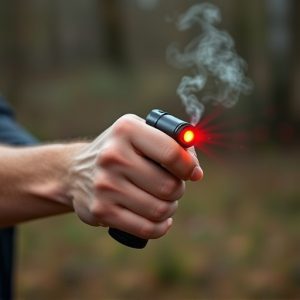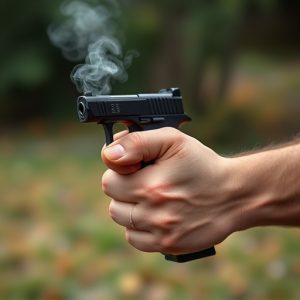Tactical Pepper Spray: Maximize Protection Against Wind with Expert Tips
Pepper spray, a powerful self-defense tool, utilizes capsaicin to create a disorienting mist that ca…….
Pepper spray, a powerful self-defense tool, utilizes capsaicin to create a disorienting mist that can incapacitate targets for 20-60 minutes. Effective usage depends on understanding pepper spray wind direction tips. In calm or light winds, precise targeting ensures maximum impact; strong winds may carry particles away. Users should employ short bursts and angle their spray slightly into the wind. Tactical deployment strategies include maintaining a safe distance, aiming away from oneself and bystanders, and maximizing effectiveness at close range (2-3 meters).
“Unleash your personal defense power with tactical pepper spray—a non-lethal yet highly effective tool. Understanding its mechanism and strategic deployment can significantly enhance your safety. This article guides you through the ins and outs of pepper spray, offering insights on its effectiveness against various threats.
Learn about wind direction tips for optimal spraying, ensuring maximum impact in different scenarios. Discover practical advice on carrying and deploying pepper spray responsibly, empowering yourself with knowledge to stay safe.”
- Understanding Pepper Spray: How It Works and Its Effectiveness for Self-Protection
- Tactical Use of Pepper Spray: Aiming for Maximum Impact in Different Wind Conditions
- Staying Safe: Tips for Carrying and Deploying Pepper Spray Effectively
Understanding Pepper Spray: How It Works and Its Effectiveness for Self-Protection
Pepper spray, also known as oleoresin capsicum (OC) spray, is a popular self-defense tool that uses capsaicin, the same compound found in chili peppers, to cause temporary incapacitation. When deployed, pepper spray creates an irritating mist that can blind and disorient targets, giving users valuable time to escape or seek help. Understanding how it works and its effectiveness in different scenarios, such as considering pepper spray wind direction tips, is crucial for anyone looking to use it for self-protection.
The primary mechanism of action involves the spray’s capsaicin binding to pain receptors in the eyes, nose, and respiratory system, leading to a burning sensation and temporary numbness. This reaction disrupts balance and coordination, making it difficult for the target to move or think clearly. The effect typically lasts between 20 minutes and an hour, providing users with enough time to get away from potential threats. While pepper spray is generally effective as a deterrent and emergency tool, its success depends on proper usage, including awareness of wind direction to maximize range and minimize exposure for the user.
Tactical Use of Pepper Spray: Aiming for Maximum Impact in Different Wind Conditions
When considering tactical pepper spray for self-protection, understanding how wind conditions can affect its effectiveness is crucial. Different wind directions play a significant role in the range and impact of pepper spray. For instance, in calm or light wind conditions, pepper spray can be deployed with precision, allowing you to target specific areas like eyes and face for maximum stinging effect. Aiming directly at the intended target ensures the irritant reaches them quickly, providing a strategic advantage.
In contrast, windy environments present unique challenges. Strong winds can carry pepper spray particles away from the intended target, reducing its effectiveness. To counter this, users should consider using short bursts and angling their spray slightly into the wind. This technique helps to overcome the wind’s force, increasing the likelihood of a successful incapacitation. Pepper spray wind direction tips like these are essential for tactical deployment, ensuring individuals can defend themselves effectively in various weather conditions.
Staying Safe: Tips for Carrying and Deploying Pepper Spray Effectively
When carrying tactical pepper spray for self-protection, understanding how and when to deploy it effectively is crucial. One essential tip is to be mindful of the wind direction before and during use. Aiming away from yourself and any bystanders ensures that the spray dissipates upwards and doesn’t create an unwanted barrier between you and your target. This simple trick can significantly enhance safety and minimize accidental exposure to the irritant.
Additionally, maintaining a safe distance is vital. Pepper spray is most effective at close range, typically up to 2-3 meters (6-10 feet). Keep this in mind when assessing potential threats, and always consider alternative escape routes or de-escalation methods before resorting to pepper spray. Remember, the goal is to disrupt an assailant’s balance and sight temporarily, allowing you a chance to escape unharmed.
Pepper spray, when used correctly, can be a powerful tool for self-defense. Understanding its mechanism, learning tactical application techniques, and following safe carrying practices are essential steps in maximizing its effectiveness. By considering wind direction and employing precise deployment strategies, individuals can ensure their safety and deter potential threats. With the right knowledge and preparation, pepper spray becomes an invaluable asset in navigating dangerous situations.


